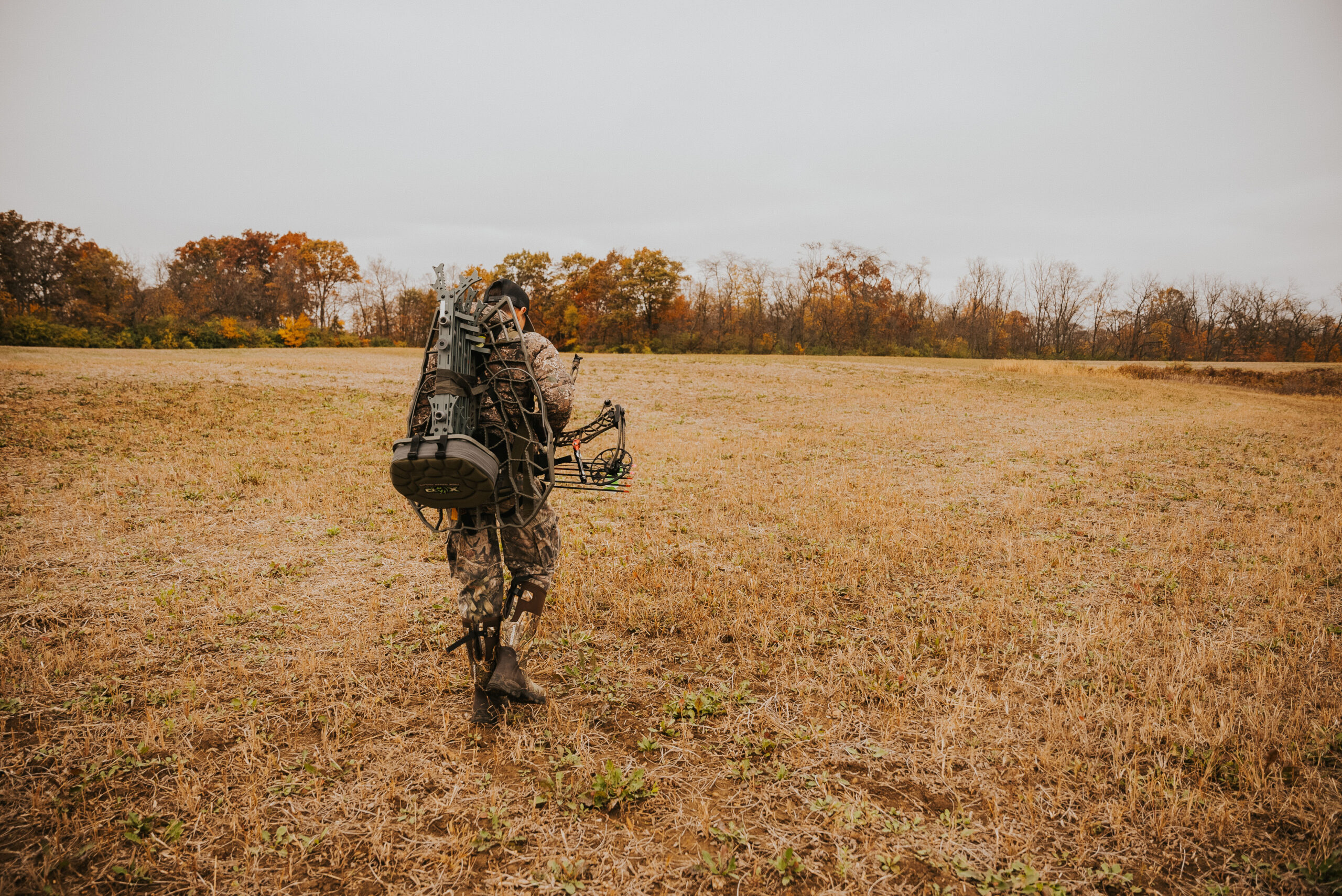Most hunters think the real work starts in September, but if you’re serious about filling your tag with a mature buck, summer scouting is where success is quietly built. Bucks in June, July, and August may not seem like they’re giving much away, but in reality, their summer behaviors offer critical insights into how you should plan your fall hunts.
By paying close attention now, you can uncover movement patterns, preferred bedding areas, and feeding habits that — with a little smart interpretation — translate directly into early-season opportunities.
Here’s how reading summer buck behavior sets you up for fall success:
1. Summer Home Ranges Matter — But They Shift Slightly
Bucks in summer generally maintain a small, defined home range, often less than a square mile, focusing on food, water, and cool bedding.
However, not all bucks stay put once velvet is shed.
Older bucks, especially, may relocate slightly to favor thicker cover and more isolated feeding areas. That said, bucks that summer near quality food and low pressure are more likely to stay close come fall.
Key Tip: Identify bucks bedding close to early successional habitats (like CRP fields, old clearcuts, or dense creek bottoms). These bucks are less likely to shift far when the seasons change.
2. Bachelor Group Dynamics Reveal Future Competition
In summer, bucks are often found in bachelor groups — sometimes five, six, or more bucks traveling and feeding together. Watching these groups is more than just entertaining; it’s a goldmine of information.
- Dominance behaviors within the group can hint at the buck that will become territorial once testosterone rises.
- Feeding order and body language can reveal which bucks are most aggressive — a clue to which ones will likely stick around and claim fall territories.
Observation Note: Watch how individual bucks posture, feed, and move relative to one another. The boss now is often the dominant buck this fall.
3. Summer Feeding Habits Predict Early Season Setups
Bucks in summer hammer high-protein food sources: soybeans, clover, alfalfa, and lush native browse. These feeding habits closely align with their early-season patterns when bow season opens in many states.
Locate the summer trails bucks are using to access:
- Soybean fields
- Cowpea plots
- Watering holes during hot spells
- Edge habitat rich with native browse
If you’re smart about stand placement now, you’ll be sitting over natural early-season travel corridors when others are still scrambling to find “where the deer went.”
4. Bedding Choices Hint at Fall Security Preferences
Bucks choose summer bedding based on two factors: comfort and security. Shade, breeze, and quick access to food dominate decisions.
However, even in summer, mature bucks show a tendency to:
- Bed near hard-to-reach spots like swamp edges, thickets, or steep terrain
- Use multiple bedding sites depending on wind and pressure
- Select areas where visibility and scent checking are easy
Understanding where a buck feels safe in the relative comfort of summer helps predict where he’ll relocate once the pressure of hunting season ramps up.
Scouting Tip: Look for bedding areas slightly off main trails and deeper into cover than you might expect — mature bucks rarely bed “easy.”
5. Summer Movement Timing Forecasts Fall Activity
While it’s true that bucks in velvet can be more tolerant of daylight movement, their habits still offer valuable clues.
- Bucks that are comfortable entering fields well before dark are likely to be killable early in the season — especially during the first cold front.
- Bucks that only show up at last light may already be “conditioned” to limit daytime exposure, suggesting you’ll need to push closer to bedding in the fall.
Pro Move: Use summer trail cam data and glassing sessions to catalog when individual bucks move. Focus early season stands on bucks you’ve seen moving confidently in shooting light.
6. Stress and Pressure Now Can Affect Fall Behavior
Too much summer pressure — like overchecking trail cameras, bumping deer from feeding fields, or tromping into bedding cover — teaches bucks to avoid certain areas before you ever climb into a stand.
Keep your summer scouting low impact:
- Long-distance glassing
- Minimal camera intrusion
- Quick in-and-out missions after rain
A relaxed buck in August is way more likely to be a killable buck in October.
Final Thoughts
Summer isn’t just for watching velvet racks grow — it’s for building a roadmap to fall success. By reading summer buck behavior, you can predict patterns, set better ambush points, and make smarter decisions about where to hunt when it really matters.
Patience, careful observation, and a light footprint now will pay off in a big way when the leaves start turning and the woods come alive with rutting activity.
So grab your binos, set those trail cameras smartly, and start connecting the dots.
Fall rewards those who scout smarter — starting right now.


